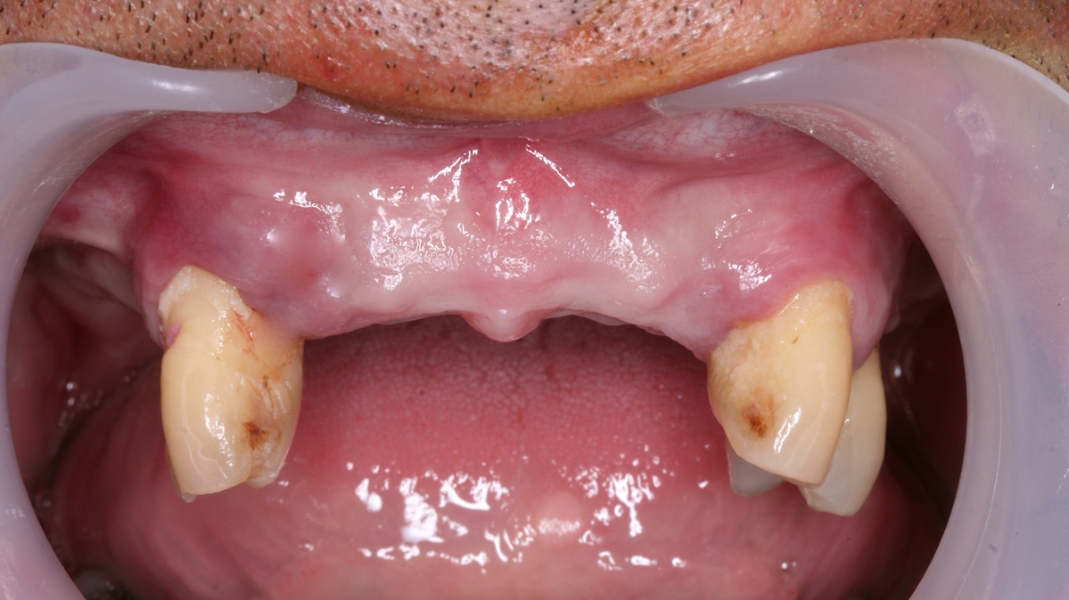Teeth in a day
Andrew Moore presents a recent implant case study.
A male patient, Mike, in his thirties presented with multiple fractured teeth and several with chronic infection. Most of the remaining upper teeth had to be removed but UR3, UL3 and UL4 were retained to help hold a removable temporary partial denture (fig 1).

Fig 1: UR3, UL3 and UL4 retained to hold a removable temporary partial denture.
After about six months, once the tissues had fully healed, I discussed the treatment options with the patient. His preference was to have the denture replaced with an implant-supported fixed bridge. If at all possible, he wanted the implant placement and prosthetics completed at the same time – teeth in a day.
The new SmartFix concept for Ankylos implants has helped practitioners to provide screw-retained prostheses for their patients. The need for sinus augmentation can be avoided by placing the distal implant at an angle. The correct vertical alignment is achieved by use of the new 30 degree angled balance base abutment.
Register now to continue reading
WHAT’S INCLUDED
-
Unlimited access to the latest news, articles and video content
-
Monthly email newsletter
-
Podcasts and members benefits, coming soon!
